Description
Punjab is known for its Phulkari. The embroidery is done with floss silk thread on coarse hand woven cotton fabric (khaddar). Phulkari and Baaghs were worn by women all over Punjab during marriage festivals and other joyous occasions. These were embroidered by the women for their own use and use of other family members and were not for sale in the market. Thus, it was purely a domestic art which not only satisfied their inner urge for creation but brought color into day-to-day life. In a way, it was true folk art. Custom had grown to give Phulkaris and Baaghs to brides at the time of marriages.
Phulkari, a rural tradition of handmade embroidery, literally meaning ” flower work “, was perpetuated by the women of Punjab (North-west India & Pakistan) during the 19th century and till the beginning of the 20th century.
Generally fabricated by a family for its own use, the fact of having completed a phulkari signified an important step for a girl on her way to becoming a woman.
Techniques and patterns were not documented but transmitted by word of mouth. Hence, each regional group was identifiable by its unique embroidery work.
The word phulkari usually indicates the shawl that was loomed and embroidered to cover women’s heads or to be displayed in a gurudwara (Sikh temple).
This tradition was often associated with the Sikh heritage but as it was also shared with Hindus and Muslims, it happens to be more geographically specific than religiously specific.
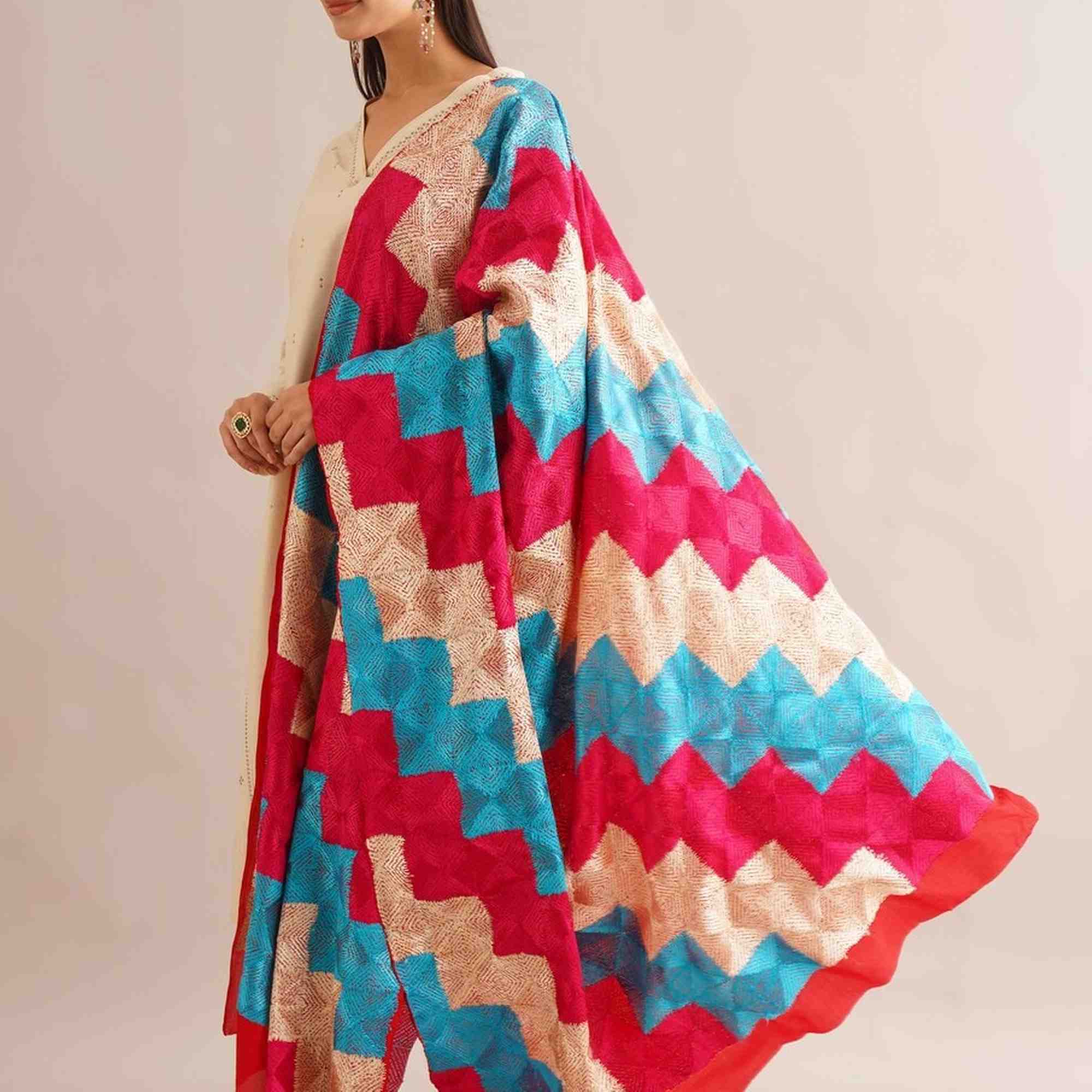
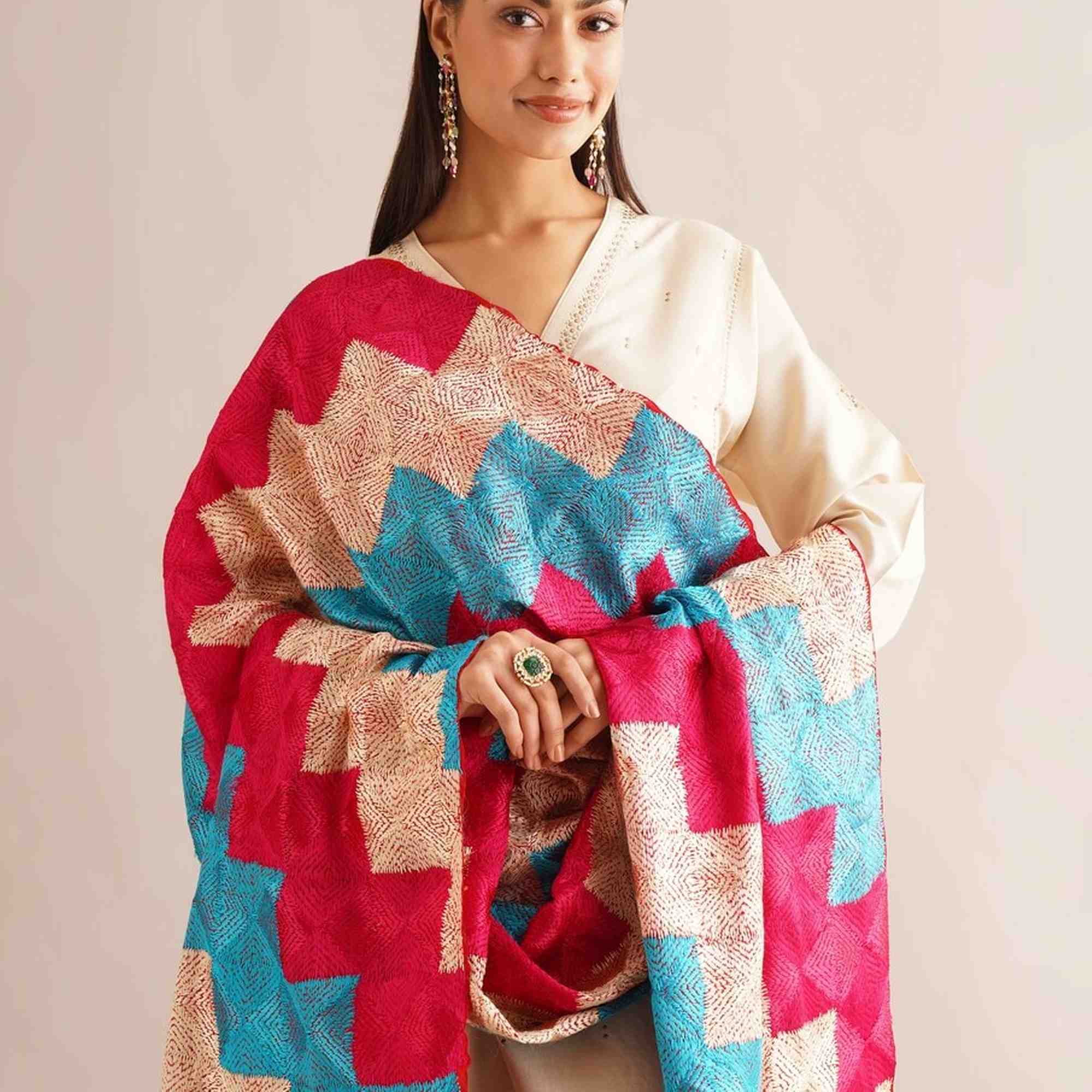
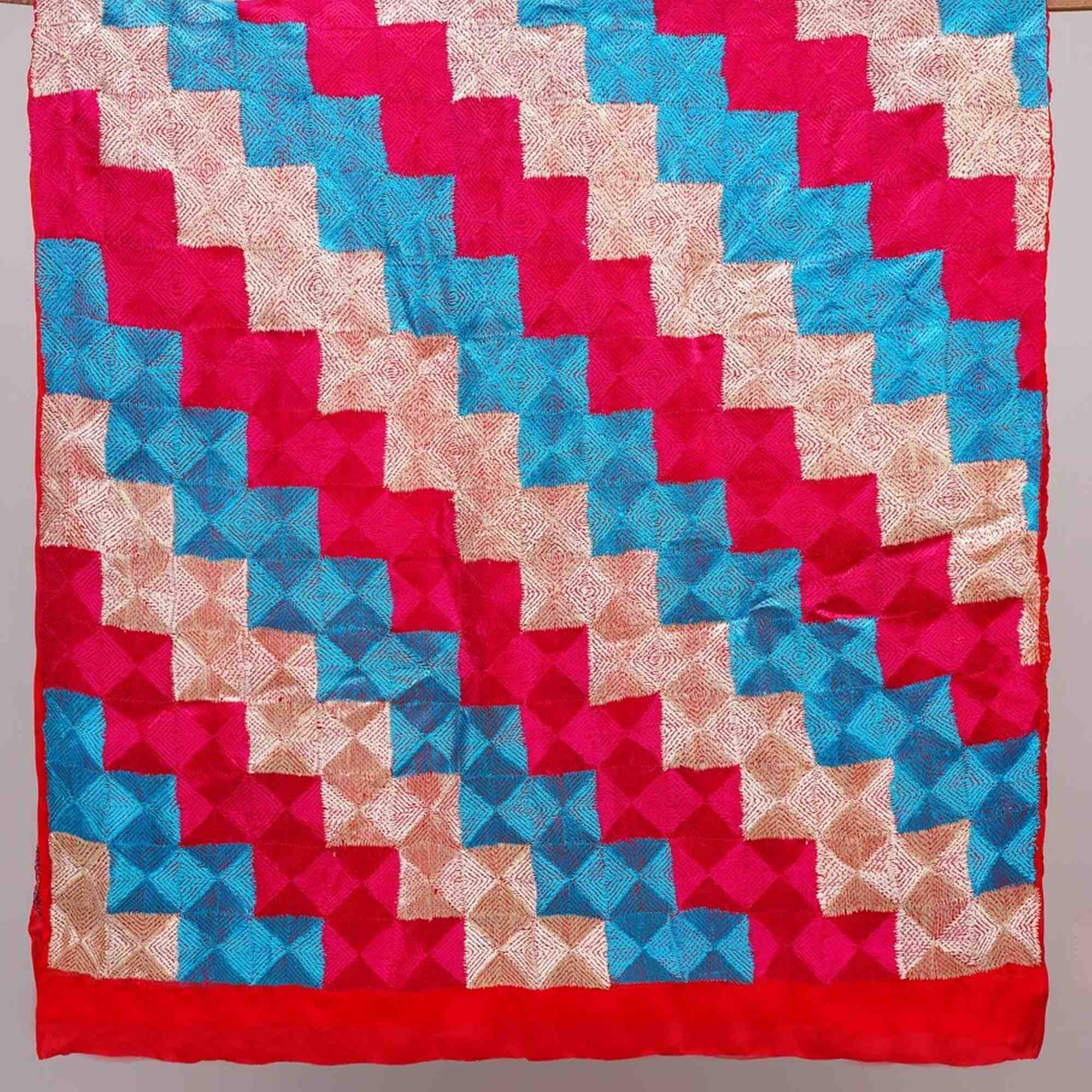


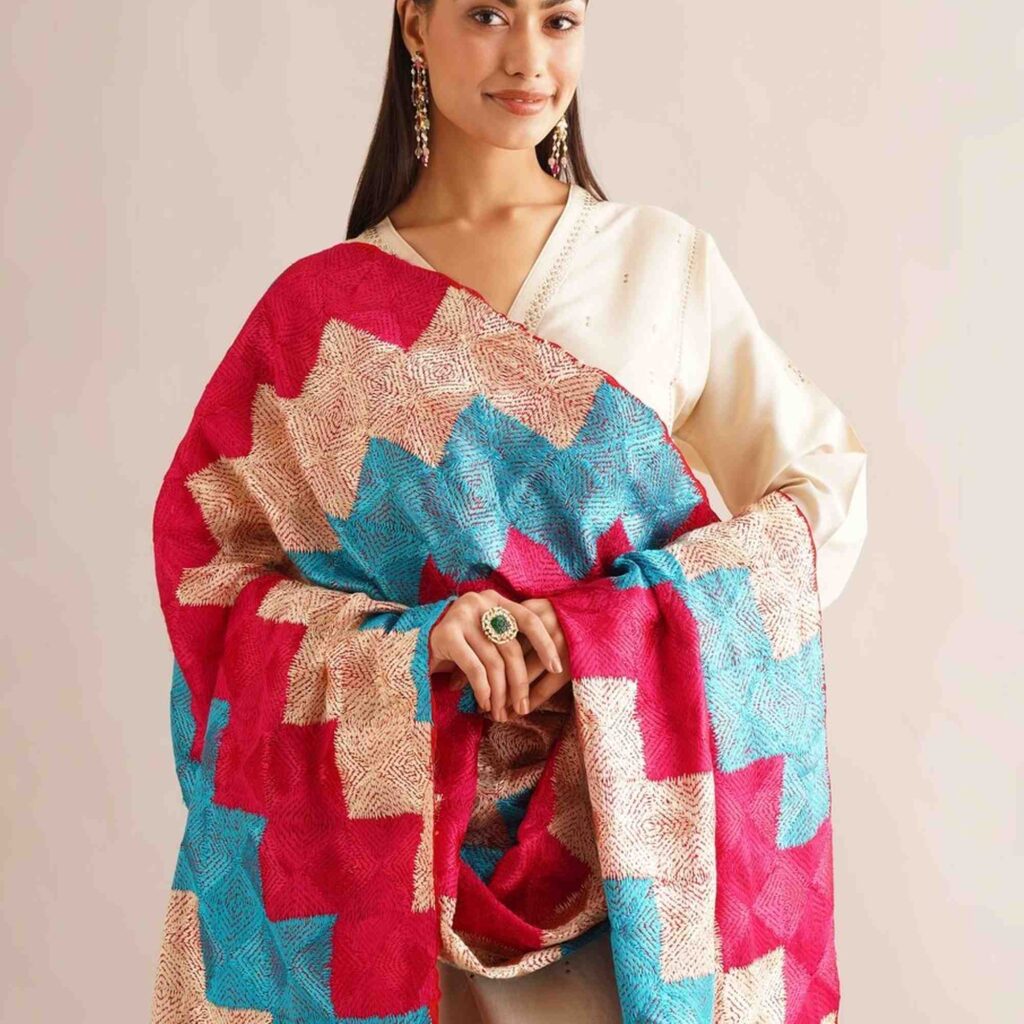
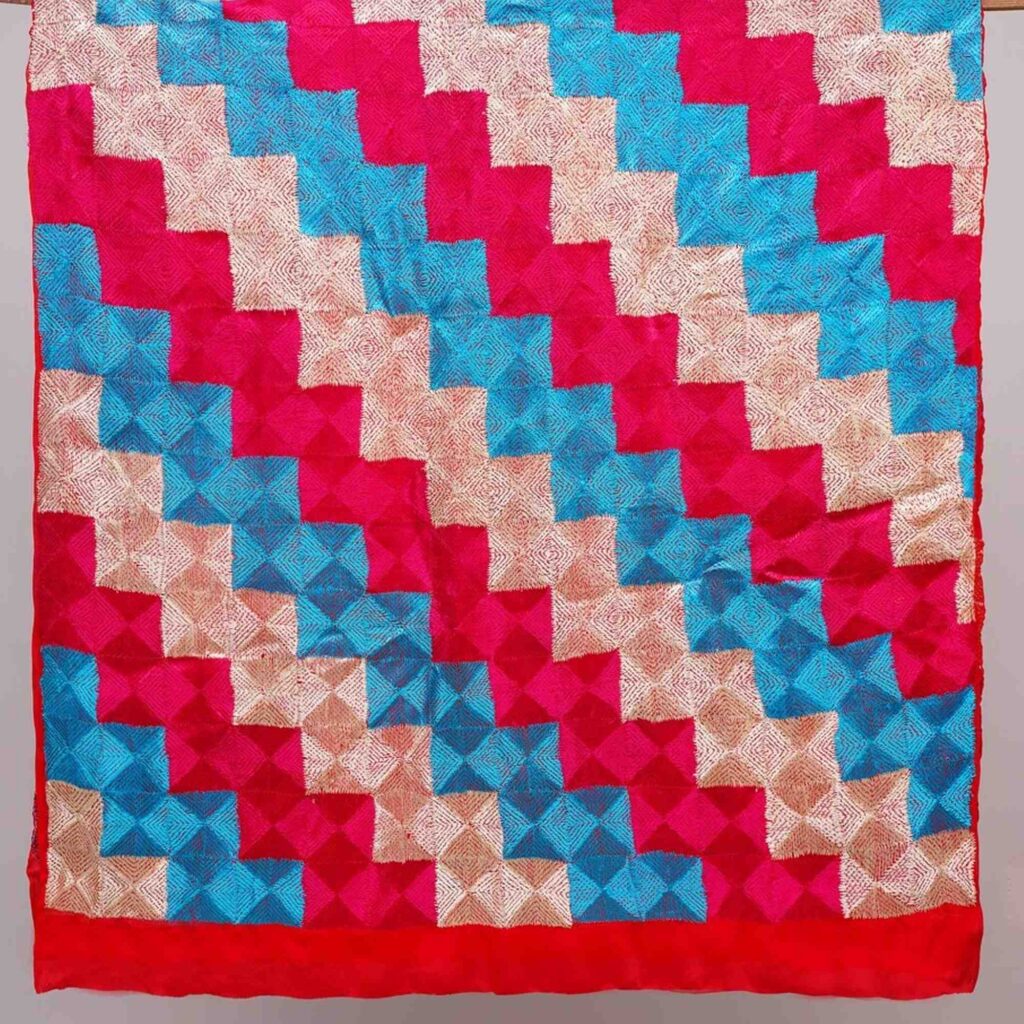





Reviews
There are no reviews yet.